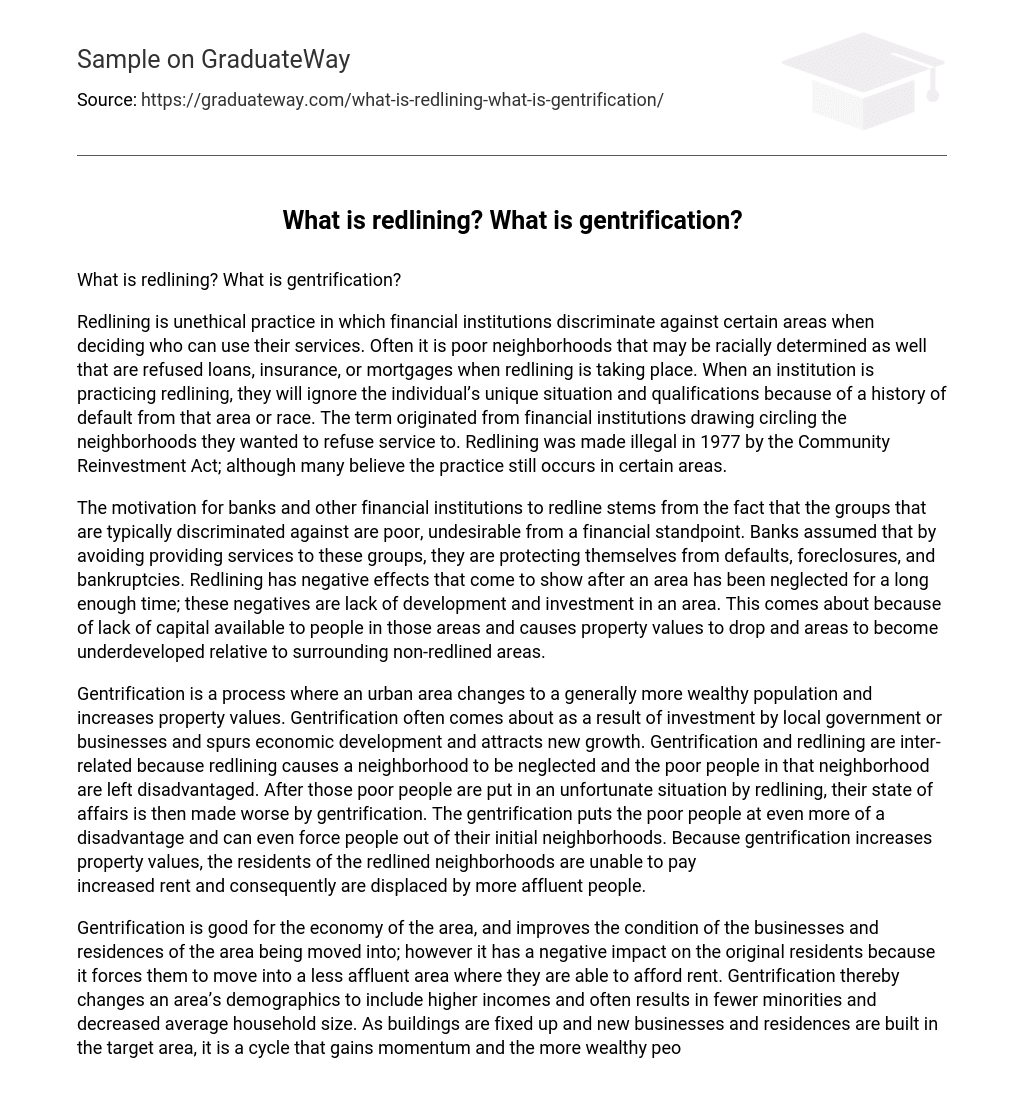Redlining is unethical practice in which financial institutions discriminate against certain areas when deciding who can use their services. Often it is poor neighborhoods that may be racially determined as well that are refused loans, insurance, or mortgages when redlining is taking place. When an institution is practicing redlining, they will ignore the individual’s unique situation and qualifications because of a history of default from that area or race. The term originated from financial institutions drawing circling the neighborhoods they wanted to refuse service to. Redlining was made illegal in 1977 by the Community Reinvestment Act; although many believe the practice still occurs in certain areas.
The motivation for banks and other financial institutions to redline stems from the fact that the groups that are typically discriminated against are poor, undesirable from a financial standpoint. Banks assumed that by avoiding providing services to these groups, they are protecting themselves from defaults, foreclosures, and bankruptcies. Redlining has negative effects that come to show after an area has been neglected for a long enough time; these negatives are lack of development and investment in an area. This comes about because of lack of capital available to people in those areas and causes property values to drop and areas to become underdeveloped relative to surrounding non-redlined areas.
Gentrification is a process where an urban area changes to a generally more wealthy population and increases property values. Gentrification often comes about as a result of investment by local government or businesses and spurs economic development and attracts new growth. Gentrification and redlining are inter-related because redlining causes a neighborhood to be neglected and the poor people in that neighborhood are left disadvantaged. After those poor people are put in an unfortunate situation by redlining, their state of affairs is then made worse by gentrification. The gentrification puts the poor people at even more of a disadvantage and can even force people out of their initial neighborhoods. Because gentrification increases property values, the residents of the redlined neighborhoods are unable to pay
increased rent and consequently are displaced by more affluent people.
Gentrification is good for the economy of the area, and improves the condition of the businesses and residences of the area being moved into; however it has a negative impact on the original residents because it forces them to move into a less affluent area where they are able to afford rent. Gentrification thereby changes an area’s demographics to include higher incomes and often results in fewer minorities and decreased average household size. As buildings are fixed up and new businesses and residences are built in the target area, it is a cycle that gains momentum and the more wealthy people that move in the more are attracted to it. It’s this cycle that causes the overall rise in property prices and increase in the number of new businesses and other developments.
Overall I think it is the redlining of neighborhoods that leads to the gentrification of these same areas. While it definitely has its plus sides in helping the geography of an area, it also leaves many people disadvantaged and worse off. It could be said that if we didn’t have redlining in the first place, gentrification wouldn’t be necessary because the less affluent areas would have a chance to change and improve themselves.





